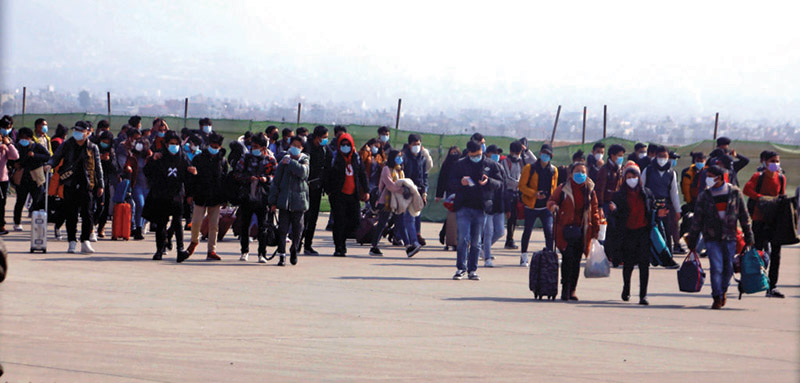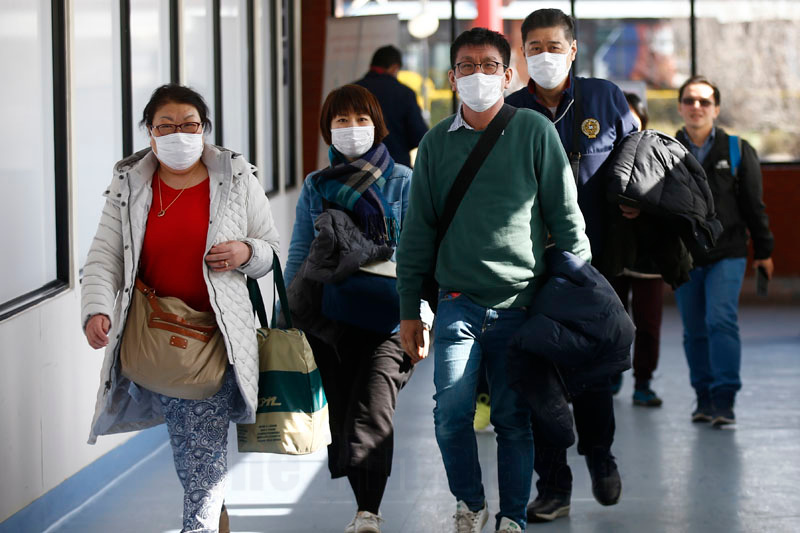Nepal lacks preparation as WHO declares global emergency
Kathmandu, January 31
The spread of deadly coronavirus has prompted the World Health Organisation to declare a global health emergency, but Nepal is not well prepared to spot and contain the disease, which has killed at least 213 people in China.
The biggest threat posed by this disease, which originated in Wuhan, is that people infected with the novel coronavirus (2019-nCoV) may not always develop symptoms of illness. This implies people with coronavirus may transmit the disease without falling ill. This unique characteristic has raised the chances of the disease spreading rapidly without anyone noticing it for some time.

“Since it is difficult to spot people who have not developed symptoms, we must quarantine everyone coming into Nepal from countries where coronavirus has been detected for at least two weeks,” said Dr Bibek Kumar Lal, director of the Epidemiology and Disease Control Division.
But Nepal does not have adequate technology and tools to ensure that the virus does not find its way into the country.
First of all, Nepal has not installed thermal scanners at land border points. Although Nepal has closed down Nepal-China border point at Rasuwagadi, other border points are open for movement of people. “Health desks at those border points are using digital thermometer to record body temperature of people,” said Dr Lal, adding, “Even if we buy thermal scanners, we need controlled environment to place them and it is impossible to set up such facilities at the moment.” As of now, Tribhuvan International Airport is the only place in Nepal where a thermal scanner has been installed.
But even if people suspected to have contracted coronavirus are spotted in a place like TIA, Nepal does not have proper ambulances to transfer patients to health facilities, according to doctors. They said double cab ambulances are required to ferry patients to hospitals, as patients do not come into close contact with drivers in those vehicles. But even if suspected patients are taken to hospitals in ordinary ambulances, their disease may not be diagnosed because the National Public Health Laboratory lacks reagents to conduct comprehensive test of the virus.
“It will take another week for the reagent to arrive in the country,” said NPHL Director Dr Runa Jha.
The Ministry of Health and Population acknowledged these shortcomings. But its spokesperson Mahendra Shrestha simply said, “We are working on it.”
Past experience has shown that global outbreak of any disease has often hit countries that are not well prepared. That’s why the WHO has said all countries should be prepared for containment, including active surveillance, early detection, isolation and case management, contact tracing and prevention of onward spread of 2019-nCoV infection.
But so far Nepal has not even been able to provide adequate personal protective equipment to health workers. Nepal has non-reusable personal protective equipment adequate for 150 tests, according to Dr Lal. “This is not adequate because those gears cannot be reused,” he said. Personal protective equipment should also be provided to ambulance drivers to prevent contagion. However, no ambulance driver has received one yet.
“Doctors, laboratory technicians and nurses should be insulated from every threat,” said Dr Baburam Marasini, former EDCD director.






